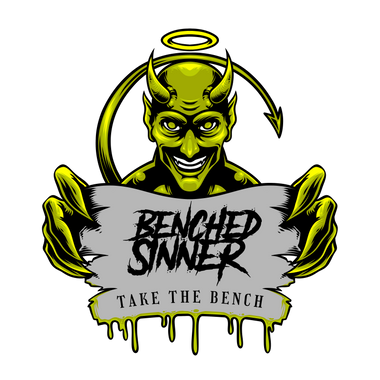The Main Features of Gothic Style: Past and Present
Most people when they hear a word "gothic" imagine a picture of young men dressed in all black as well as girls dressed in deliberately sexy outfits with tight corsets, bouffant skirts, and flashy makeup. However, the Gothic style was not always like that. Its roots go back to the Middle Ages, in the era of knights and persecution of witches.
Gothic style can be seen in almost everything: architecture, sculpture, painting, and, of course, clothes. It had a significant influence on the fashion of that time. Modern fashion also uses elements of this style: you can see distinctive features of Gothic in the collections of famous designers not to mention that many subcultures are inspired by its gloomy aesthetic.
History and Features of Gothic style
The somber, strict, and at the same time the majestic beauty of the Gothic style originates in a rather difficult period of history, which was called the Dark Ages. However, Gothic got its name later, in the Renaissance. For the thinkers of that time, all items made in the Gothic style looked wrong, unconventionally, and disproportionately. Therefore, they received a name of the tribe of Goths, which was associated with these features.
Gothic elements were quite common in interiors of the Victorian era with all their luxury and splendor. Gothic vaulted windows and elongated, pointed pinnacles, which decorated not only facades but also interiors, helped to achieve the effect.
Gothic style in the Middle Ages
If you look at the Cathedral of Notre Dame, the main signs of the Gothic style will become clear:
- pointed arches;
- stained-glass windows;
- gloominess;
- pointed, elongated forms;
- mythical monsters that frighten passers-by.
All these features are reflected in the clothes. In the dark Middle Ages as well as during the reign of Queen Victoria, there was a strong difference between estates. It was expressed not only in the way of life but also in outfits. Women from the lower classes could not wear clothes made of expensive fabrics, such as silk or velvet. Neither could they wear trains. They were a sign of the nobility. The longer a train was, the higher was its owner’s status.
Shoes with grotesquely long noses, which sometimes reached half a meter, were also common for the Medieval Gothic.
Inherent attributes of men's Gothic apparel of that time:
• velvet;
• pointed high men's hats;
• sharp-nosed elongated shoes;
• standing collars;
• sharp cuffs;
• lush sleeves of frock coats and caftans.
By the way, black color began to prevail much later. Back then the clothes were bright and vibrant: burgundy, blue, lilac, and green. Fabrics with floral ornaments were also common.
Modern Gothic
The modern Gothic style originated on the streets during the 1970-80’s. People were tired of punks and the moods of despondency and decadence were in the air. Black color became popular, which only increased the effect of gloom and oppressive solemnity of the Gothic style.
In modern fashion, there are several trends of the Gothic style, but each of them is characterized by such features as an abundance of black and silver gothic jewelry. Materials that are most often used to create clothing are leather, mesh, velvet, silk, and even vinyl. Color combinations, by and large, are depressive: for example, black with red or white. They emphasize the gloom and solemnity and make the image more catchy.
The staple of this style can be seen in the Goth’s wardrobe. This subculture occurred in the 1970’s. They follow the style in everything: not only in clothes, but also in hairstyles, makeup, musical preferences, and books.
Goths: a modern reading of the Gothic style
No matter how cyclical the fashion is, when it comes back from the depths of centuries, it undergoes many changes. However, you can still see the idea behind the modern gothic fashion. When you mention Goths, the first things pop up in your mind are images of gothic architecture. It is because gothic clothes and architecture have so much in common: gloominess, solemnity, multilayeredness, tragic majesty, and along with that, some magnetic appeal.
The male Gothic style in clothes is very similar to the female one. Therefore, male Goths also use make-up and intensively paint the eyes black.
At the same time, clothes can be stylized to medieval dresses with gloves, tailcoats, men's pointed hats, cylinders, lace cuffs and other elements of romanticism that were inherent in neo-Gothic. Here we should thank Queen Victoria which originated luxury in clothes. Sometimes, Victorian clothes with a bias in gothic style have brutal attributes, such as chains, necklaces-collars, and so on.
The basis gothic men's wardrobe includes:
• black shirts;
• leather pants;
• white blouses reminiscent of women's ones with a jabot collar;
• long coats;
• hats;
• gloomy make-up: pale face and dark hair;
• silver jewelry carrying gothic symbols: cross pendants, skull earrings, ornaments with roses, spiders, dragons, bats, etc.
In general, a Goth’s image must be mysterious and mystical. Add some metal ornaments or silver accents, don’t forget lots of black colors and voila, you have a look of a Goth.
The Gothic style of clothes has been rethought many times over the past decades. Nevertheless, it remained invariably loved by everybody: subcultures, fashionistas, and designers. After all, you don’t have to dress in medieval costumes from head to toes or become a Goth. It is enough to use Gothic style accessories to look bold, appealing, gothic, and relevant. BikerRingShop with our massive collection of Gothic jewelry will help you with this.


Leave a comment